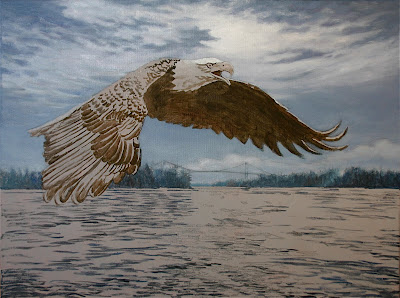 Christmas is over, so I want to move on beyond Santa to close out the year. Today is New Year's Eve, the last day of 2009. The winter is just begun, even though it always seems to be well established by this time each year!
Christmas is over, so I want to move on beyond Santa to close out the year. Today is New Year's Eve, the last day of 2009. The winter is just begun, even though it always seems to be well established by this time each year!This is an illustration that I did a few years ago as a piece of licensed art. For those who don't know, licensed art is designed to appeal to companies who need images to enhance or complete a product which they wish to bring to the market place. They pay a fee, or royalties or both, in exchange for the right to use the image in a prescribed manner on specific products and for a set period of time, usually three years. I do a fair amount of this type of work and I sometimes also license my more traditional paintings as well.
I call this piece "Look Into My Big Brown Eyes". It is a whimsical rendering of a polar bear character, especially appealing because of the "Elton John" sized glasses that he is sporting. This type of light-hearted image can be attractive to companies that produce such products as greeting cards or stitched products.
The illustration was done on illustration board using acrylic paint with a few touches of pencil crayons. The size of the original is 7 inches by 10.25 inches. You can find a complete selection of my licensed art images at www.porterfieldsfineart.com/RichardDeWolfe/richarddewolfemainpage.htm.













































